Genki Furuhata
Physical deep learning based on optimal control of dynamical systems
Dec 16, 2020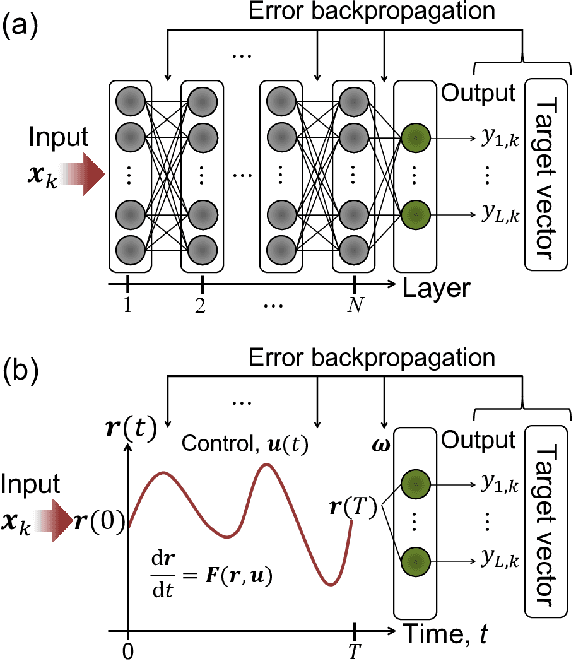
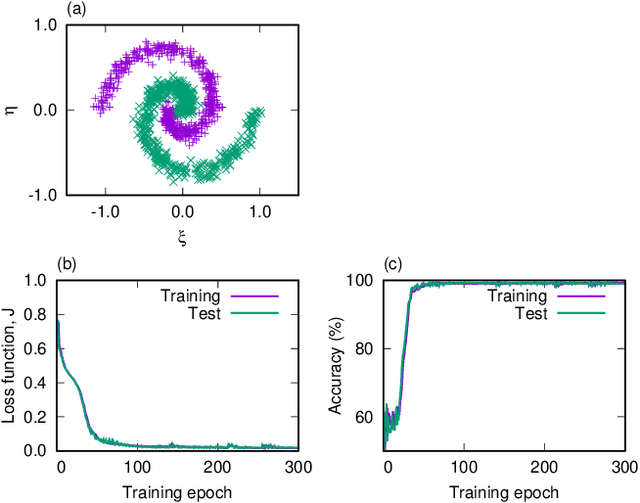
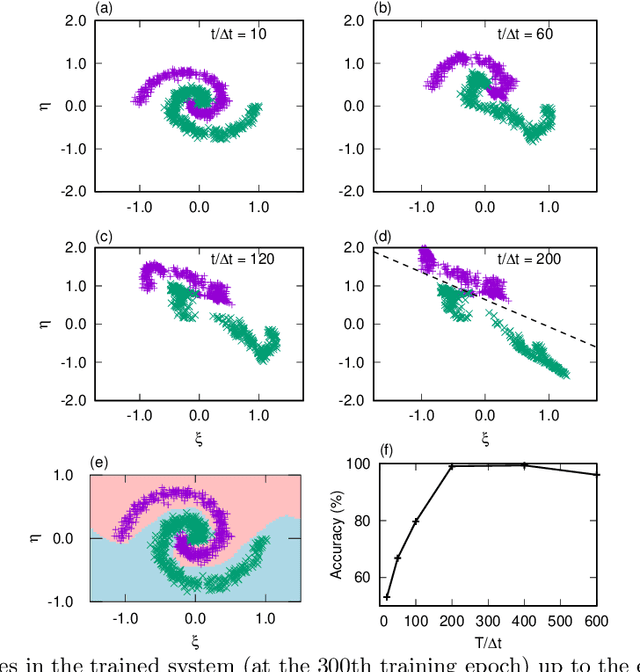
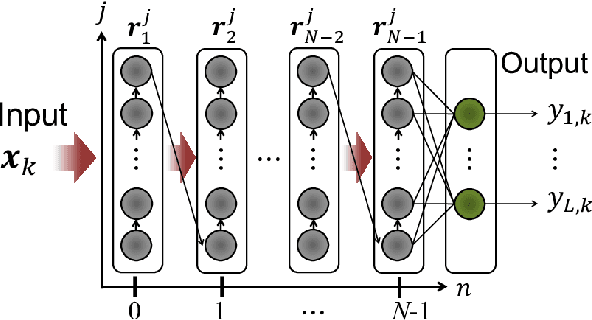
Abstract:A central topic in recent artificial intelligence technologies is deep learning, which can be regarded as a multilayer feedforward neural network. An essence of deep learning is the information propagation through the layers, suggesting a connection between deep neural networks and dynamical systems, in the sense that the information propagation is explicitly modeled by the time-evolution of dynamical systems. Here, we present a pattern recognition based on optimal control of continuous-time dynamical systems, which is suitable for physical hardware implementation. The learning is based on the adjoint method to optimally control dynamical systems, and the deep (virtual) network structures based on the time evolution of the systems can be used for processing input information. As an example, we apply the dynamics-based recognition approach to an optoelectronic delay system and show that the use of the delay system enables image recognition and nonlinear classifications with only a few control signals, in contrast to conventional multilayer neural networks which require training of a large number of weight parameters. The proposed approach enables to gain insight into mechanisms of deep network processing in the framework of an optimal control problem and opens a novel pathway to realize physical computing hardware.
Lotka-Volterra competition mechanism embedded in a decision-making method
Jul 29, 2019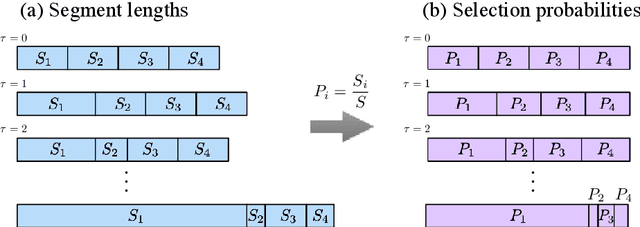

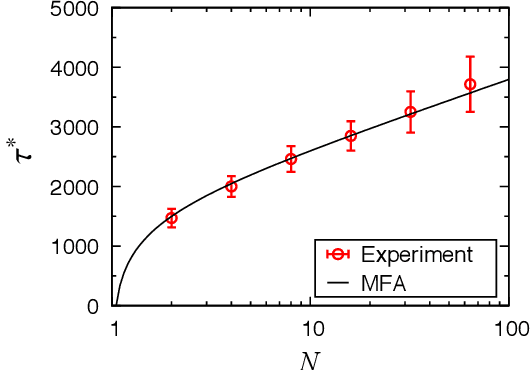
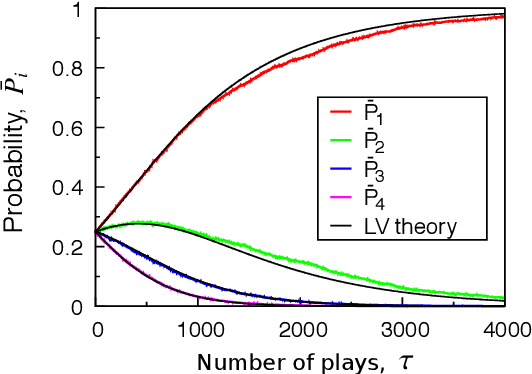
Abstract:Decision making is a fundamental capability of living organisms, and has recently been gaining increasing importance in many engineering applications. Here, we consider a simple decision-making principle to identify an optimal choice in multi-armed bandit (MAB) problems, which is fundamental in the context of reinforcement learning. We demonstrate that the identification mechanism of the method is well described by using a competitive ecosystem model, i.e., the competitive Lotka-Volterra (LV) model. Based on the "winner-take-all" mechanism in the competitive LV model, we demonstrate that non-best choices are eliminated and only the best choice survives; the failure of the non-best choices exponentially decreases while repeating the choice trials. Furthermore, we apply a mean-field approximation to the proposed decision-making method and show that the method has an excellent scalability of O(log N) with respect to the number of choices N. These results allow for a new perspective on optimal search capabilities in competitive systems.
 Add to Chrome
Add to Chrome Add to Firefox
Add to Firefox Add to Edge
Add to Edge